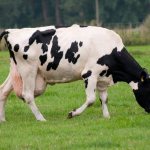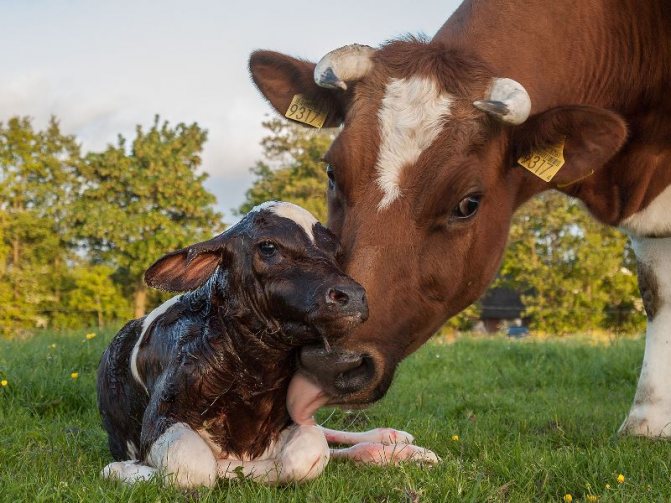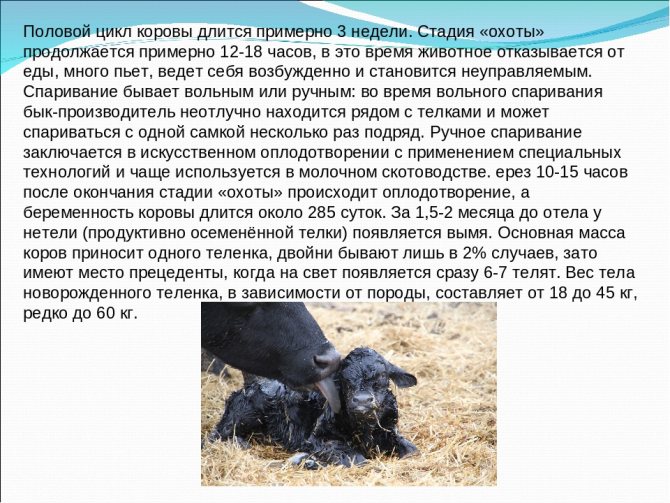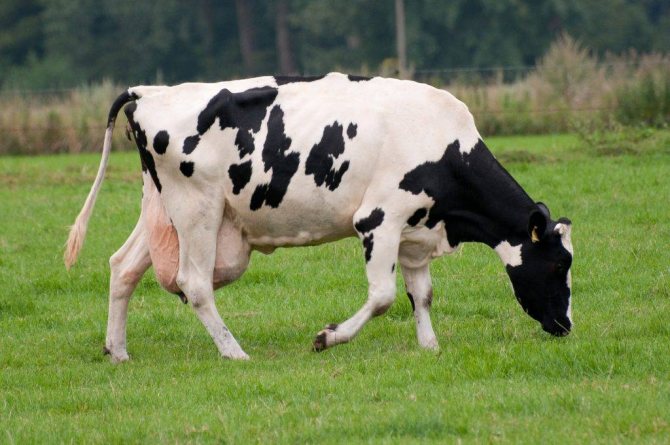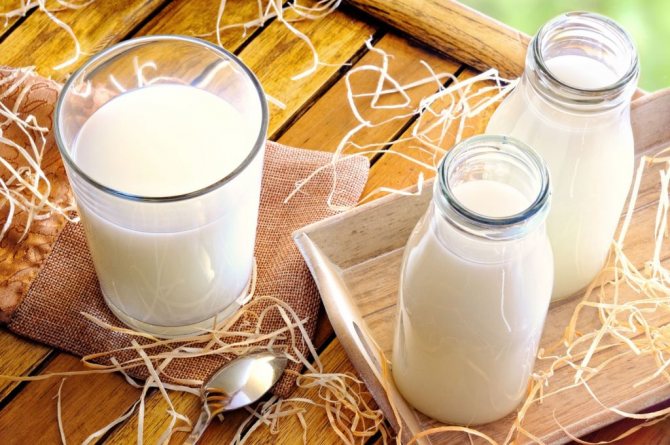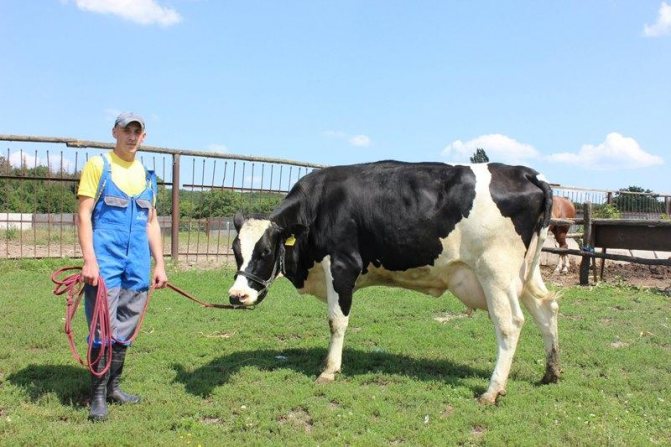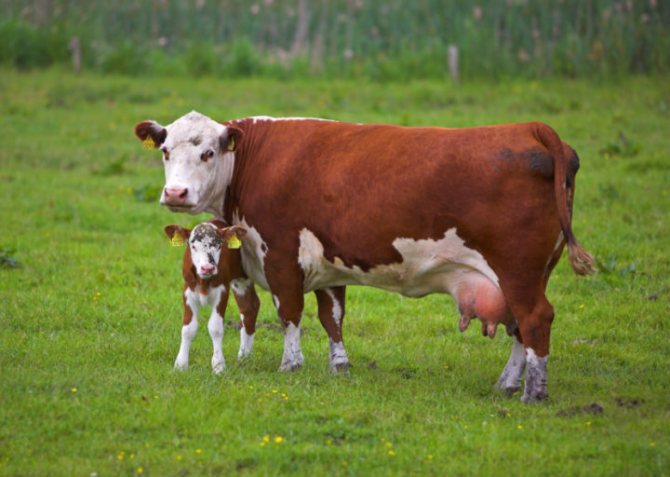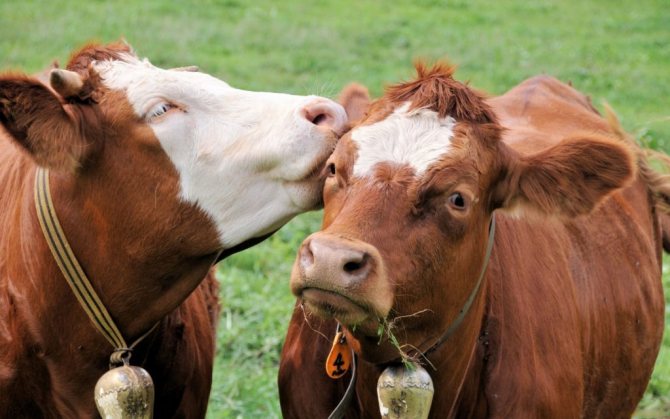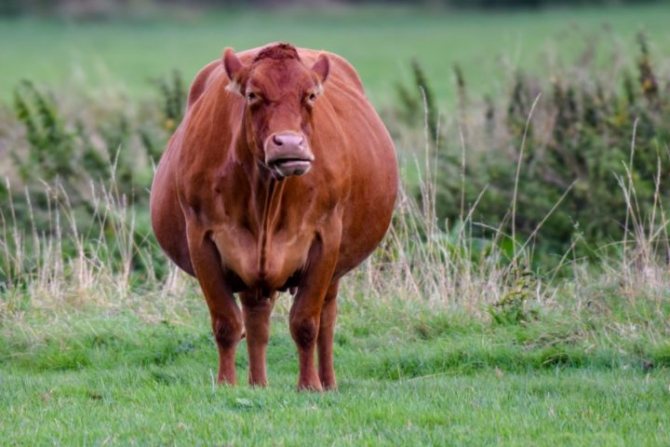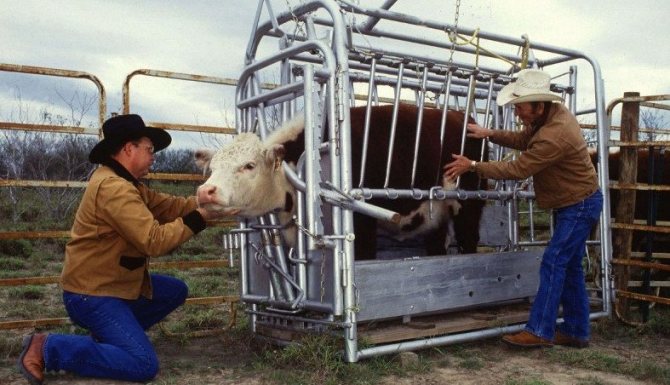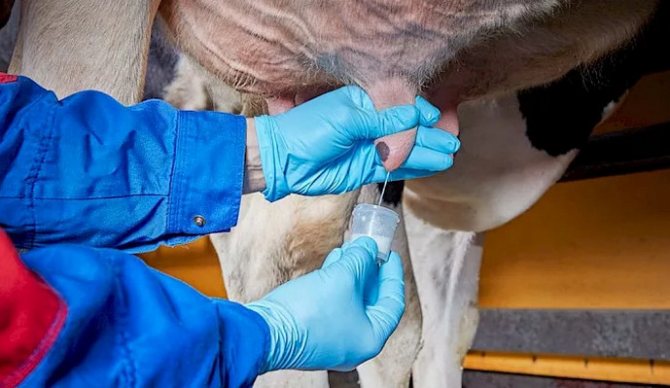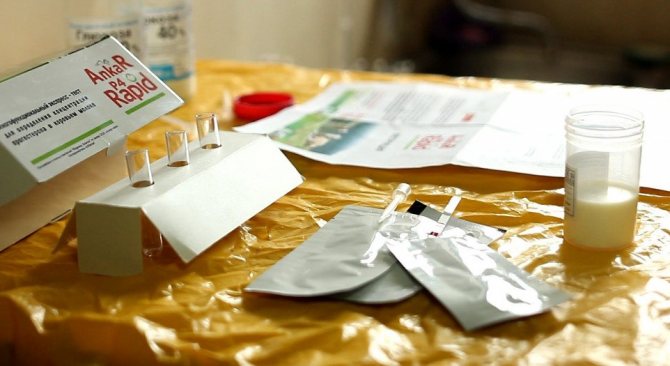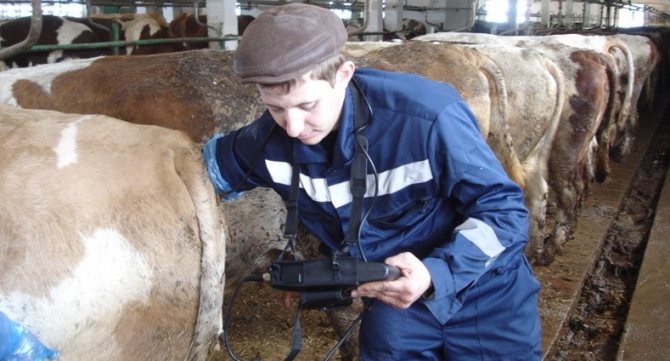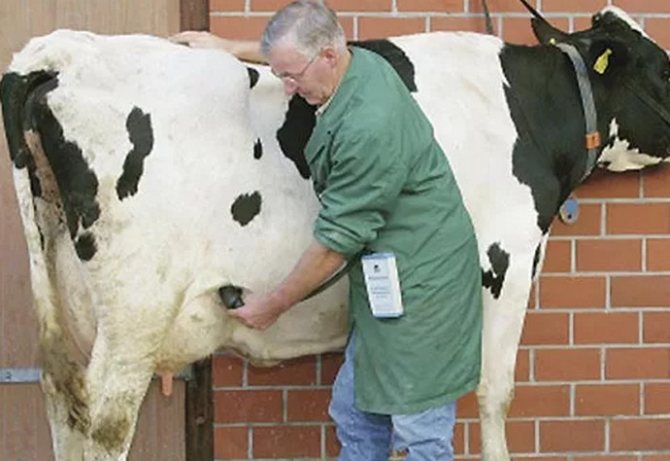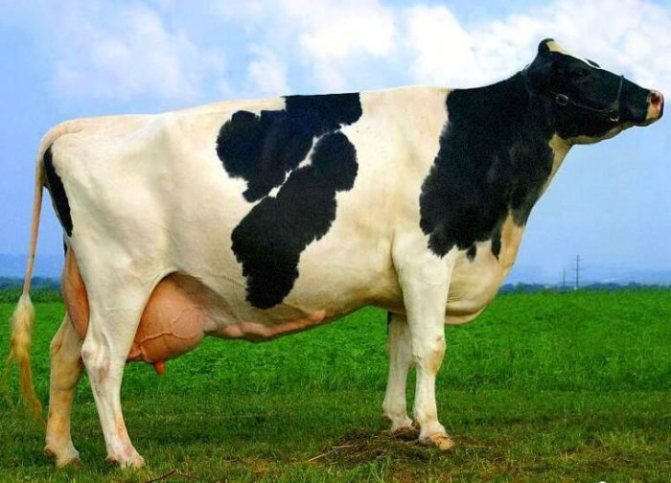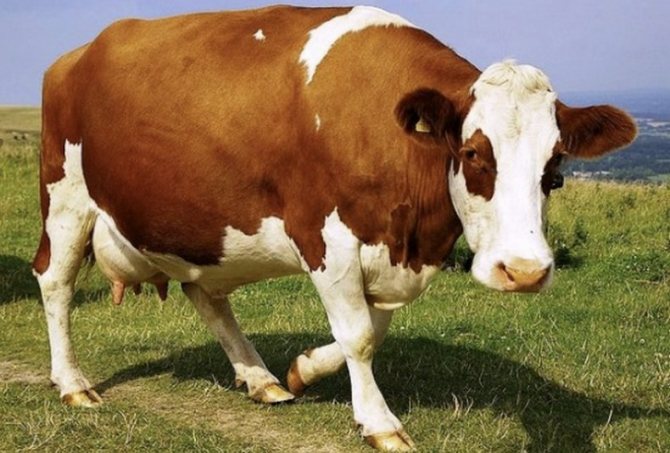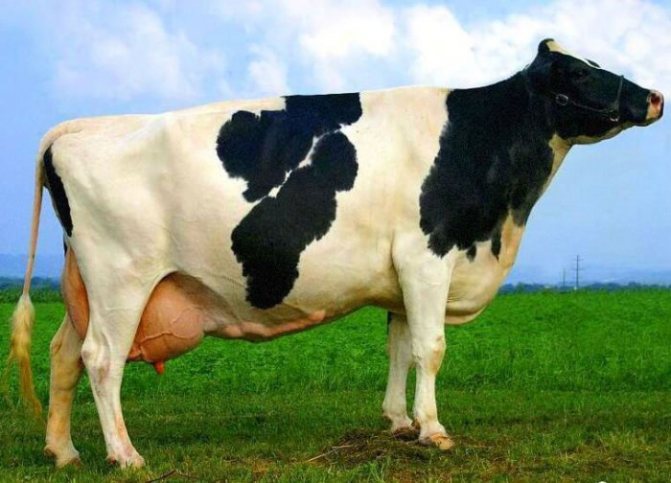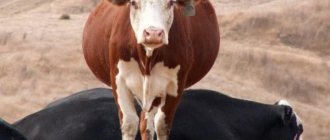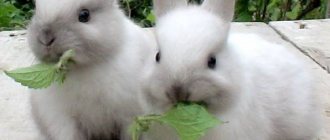Livestock »Cows and bulls
0
7052
Article rating
Caring for a cow is not an easy task, and novice herders need to know the basics. Beginners in animal husbandry should be able to determine the pregnancy of a cow by month. It is also worth finding out exactly how the pregnancy proceeds, what kind of care is needed during this entire period. There are several symptoms by which, in fact, pregnancy is determined in cows, there are also methods that confirm that the process is proceeding normally.
Cow pregnancy by month
In addition, you can always use a pregnancy and calving calendar to help you determine if the heifer is pregnant. Surprisingly, even the state of the cow's gut can indicate whether to wait for replenishment in the farm in the near future. More on this and much more below.
Definition of cow pregnancy
How to identify yourself
You can check a cow for pregnancy at home:
- the cow's behavior is calmer and more cautious;
- increased appetite, change in food preferences;
- a pregnant heifer does not call a bull;
- on the external genitals, translucent white mucus discharge is noticeable, sometimes blood clots come out;
- the coat becomes more silky and shiny.
In a non-pregnant heifer, a few weeks after the hunt, the uterus again bleeds, the individual worries, calls the bull. The presence of profuse bleeding is not always a sign of pregnancy, sometimes it is a symptom of pathology - worms, vitamin deficiency, malfunctioning of the genitals.
You can independently find out the pregnancy from a cow by milk. 14 days before calving, sweet colostrum will begin to exude from the udder. Milk in the last days is bitter.
Veterinary research
There are also more reliable methods for determining pregnancy in cows.
- Conducting laboratory tests (checking the level of progesterone in milk or urine).
- Rectal examination (rectaline). It is carried out only by a veterinarian, because there is a risk of introducing dangerous infections into the intestines of the animal.
- Ultrasound diagnostics (ultrasound) of the abdominal cavity. Carried out exactly one month after fertilization. The method is capable of provoking embryo pathology at an early stage.
Today, in animal husbandry, preference is given to enzyme immunoassay for milk or urine. The method is completely safe for the heifer and the fetus at an early stage.
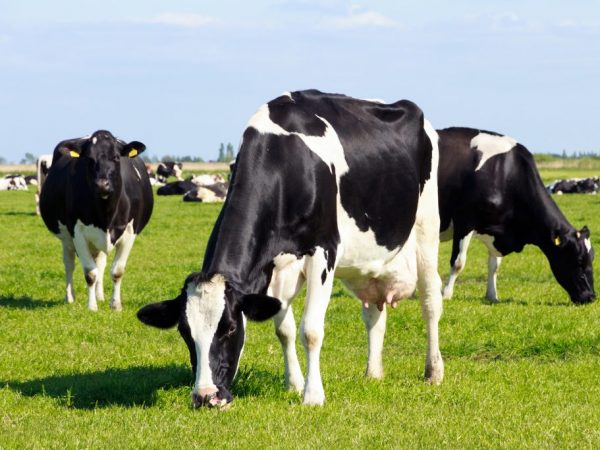
If a cow is pregnant, the structure of her coat changes: it becomes smoother and starts to shine.
How to identify pregnancy?
You can independently determine the pregnancy of a cow by several methods:
- visually;
- manually;
- express test;
- ultrasound examination.
The visual method consists in examining the genitals, more specifically, the secretions. The appearance of transparent, viscous mucus, which quickly dries up and crusts the genitals, indicates pregnancy. However, the discharge should not be bloody or purulent, as this signals pathological processes in the body.
It is worth taking a close look at the udder, legs, belly and fur. In a pregnant heifer, the mammary glands swell, the belly and legs swell. Hormonal changes in the animal's body associated with successful fertilization have a positive effect on the condition of the coat. It becomes shiny, smooth, elastic.
In the later stages of pregnancy, the cow is easily identified by the contours of the abdomen - the right side becomes larger than the left. It is necessary to look while standing behind the animal.
Manual method determines pregnancy only after 4 months of gestation. To do this, put a palm on the right side of the abdomen 15 cm behind the ribs, 45 cm below the hungry fossa. Light movements of the palm in the direction of the lower abdomen probe the abdominal cavity, then release the pressure, but do not remove the hand.
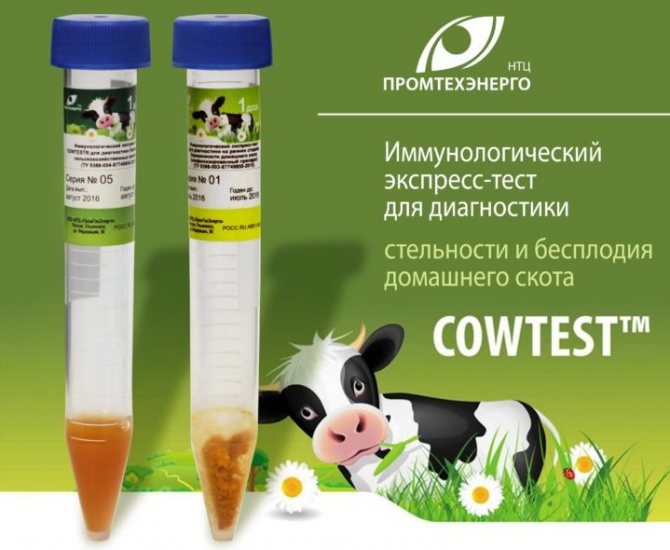

Express test
With a successful conception, a push of the fetus will be felt. At a later date - after 6 months, with this method of determination, the movement of the fetus and the firm contours of its body are clearly felt.


Important! A manual examination is carried out in the morning before eating, since the work of the digestive organs can be easily confused with the thrusts of the calf.
Phases of pregnancy
A pregnant cow walks for 9-10 months.
Pregnancy is divided into several phases:
- Initial phase, duration - 1-5 months. A pregnant cow differs in behavior and body shape, she becomes larger. In the early stages, it is necessary to ensure that the cow receives food on time, does not injure the abdominal part of the body.
- The middle phase lasts 2 months (6-7). The udder of a young cow hardens and grows heavier, milk yield is sharply reduced. If there is milk, it is necessary to express it up to 7 months.
- The last phase is 8, 9, 10 months. When milk yield is reduced to 4 liters, the cow needs to start (stop milking) until calving. Measure is equally important for heifers and heifers. Drying and feeding are varied.
An experienced person or a veterinarian should give birth to an animal. If there are complications in an inexperienced person, it will not be possible to determine the problem, improper manipulations will harm the mother or newborn.
Unconventional ways
If there is no laboratory, there is no experience of rectal examination, then the pregnancy of a cow is determined by folk methods. It is possible to determine whether a cow has borne a calf or not using simple tests. Pregnancy is determined by milk:
- for research take 5 ml of alcohol. The same amount of milk is added to it. They mix everything. If the milk curdles, the cow becomes pregnant. Cheese flakes will appear in the glass;
- a few drops of milk are added to a glass of cold water. If it spreads over the surface, then the cow is barnyard. Milk from pregnant cows dissolves;
- some housewives just boil milk. It curls up if the cow is pregnant.
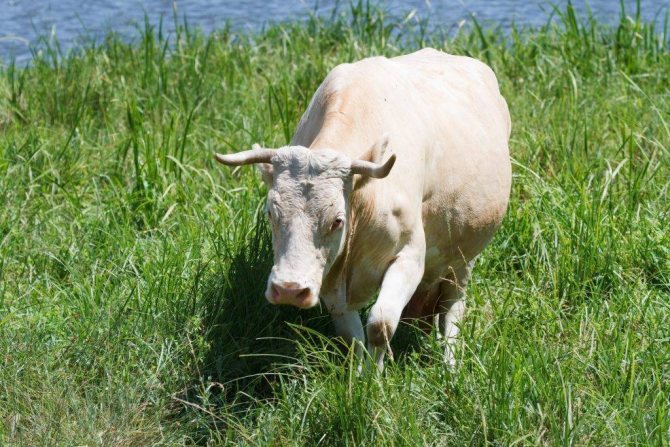

The taste of the milk changes. It becomes salty. Colostrum tastes the same. A change in milk quality indicates that it is time for the cow to run dry. They stop milking her, feed her heavily with combined and juicy feeds, give her vitamin supplements and salt.
YouTube responded with an error: Bad Request
Pregnancy calendar
Knowing the day of fertilization, a calendar of pregnancy and calving of the cow is compiled. He is led to monitor the phase of pregnancy: depending on the period, feed and care are chosen, as well as for regular examination of the body - the calf will be born strong and healthy.
Of course, there are some errors in it, but they do not interfere with observation.
The popular method for determining the exact time of calving: the number 11 is added to the approximate date of conception (12, if conception occurred in January or February), the number 3 is subtracted from the number of the month.
An example of a pregnancy calendar calculated by the formula is given in the table:
Determining Calving Date Using Formula
The main indicator here is the day the cow was inseminated. Knowing this indicator, you can find out the day on which you will have to calve. It can be calculated in two ways: calculate the formula or using the pregnancy calendar, which has a tabular form.
The formula is pretty simple:
D - date and month of calving;
H is the moment of coverage;
H is the sequence of the month when insemination should take place according to the calendar value;
Numeric values do not change.
For example, a cow was covered on August 7th. You need to make a calculation - August is the 8th month in the calendar. Substituting the numbers, you can see the following: (7 + 11) (8-3) = 17.05. it turns out that calving will take place on May 17th.
As for the calendar with table values, it will look like this:
The birth of a calf is an important event for the breeder. You need to prepare for it in advance. A lot needs to be done for a healthy calf to be born. In this case, the preparation plan depends on the expected date of birth. The article will look at the methods that are used to determine when a cow will calve.
Duration of pregnancy in cows
The average duration of a cow's gestation period is 270-300 days. The timing may deviate slightly from those indicated, since it is not always possible to accurately determine the date of fertilization. Other factors affect the gestation period of a calf:
- Cow health.
- Conditions of detention.
- Diet.
The farmer needs to be guided by how long a cow's pregnancy lasts in order to have time to prepare it for calving. The cow pregnancy calendar helps him in this. But before you start it, you need to make sure that the cow is pregnant.
General recommendations
Keeping cattle is difficult. Determining the pregnancy of a cow is difficult for newcomers to animal husbandry. To understand how much a pregnant female walks, it will turn out with the help of veterinary examinations, ultrasound and analyzes. The information allows you to find out the month and date of conception with an error of about 10 days.
Calving lasts 9.5 months and is divided into three phases. Each phase has its own characteristics and differs in the rules of care.
To keep everything under control, a cow pregnancy calendar is drawn up - this way it is easier to understand what the animal needs in a given period.
Lack of timely treatment and poor living conditions are possible reasons for the death of a mother or calf, as well as childbirth paresis. This is a condition when childbirth and pregnancy are normal, but after them the mother falls and is not able to stand up.
Methods for determining pregnancy
There are several ways to find out if a heifer has become pregnant. This can be done at home without any medical devices, such as milk. The behavior of the animal also helps to identify the changes that have occurred in its body. What methods are used to detect pregnancy in cattle:
- Laboratory tests.
- Ultrasound procedure.
- Rectal examination.
- Hormone tests.
- Visual inspection of the animal.
Most of the methods for determining pregnancy are within the purview of the veterinarian. A farmer can independently find out about a cow's pregnancy in only two ways - by observing her behavior and by testing milk.
Rectal examination
A rectal examination of cows for pregnancy is carried out by a veterinarian, since he knows what changes the uterus undergoes in animals after fertilization. The doctor has extensive experience and will not harm the cow during the examination.
The veterinarian treats his hands with disinfectant solutions, puts on high sterile gloves. His assistant fixes the horns of the cow. At this time, the veterinary service worker takes the animal's tail aside and gently inserts the brush into the anus.
Rectal examination allows you to determine:
- change in the size of the uterus,
- study the shape of the genital organ;
- the consistency of the walls;
- density;
- location in the peritoneum;
- ovarian condition;
- to feel the corpus luteum (in the early stages of pregnancy);
- examine the cervix.
The veterinarian is able to accurately determine pregnancy at the earliest possible date, in the first month after fertilization.
Attention! When examining a cow rectally, you should be extremely careful not to provoke an increase in the tone of the uterus and not to injure the animal. At the moment of muscle contraction, hand movements should be stopped in order to avoid internal breaks.
For milk
Most farmers know how to determine if a cow is pregnant by her milk. Its chemical composition and quality parameters tend to change when a cow becomes pregnant. By the milk drop, it is easy to determine whether fertilization has occurred. Let's look at two ways to do this at home.
- Fill a glass with clean cool water, drop a drop of freshly expressed milk on its surface. Watch her - if the droplet dissolves completely without leaving a white trace, then the cow is not pregnant. Otherwise, the drop will leave a blurred blur on the surface of the water, resembling a cloud.
- Mix equal amounts of alcohol and fresh milk from the cow to be tested and wait a few minutes. If the cow is pregnant, the milk will curdle.
Ultrasound examination is allowed to be performed 30 days after the expected date of fertilization. An ultrasound scan is performed by a veterinarian. With the help of the sensor on the monitor screen, you can see not only the embryo, but also identify possible pathologies of its development.
Attention! Too early ultrasound diagnostics can cause miscarriage.
Laboratory diagnostics
It is easy to determine the pregnancy of a cow based on the results of laboratory tests. Under the influence of changes in the hormonal background of the animal, the chemical composition of the blood also changes. Reliable data on a cow's pregnancy can be obtained as early as the third week after fertilization (provided that more than three months have passed since the last pregnancy).
Pregnancy tests
Milk cow pregnancy test
There are two types of cow pregnancy tests. Both respond to increased levels of animal progesterone, a hormone that is actively synthesized during pregnancy. One of the tests is designed to analyze milk, the other determines pregnancy by urine.
Visual inspection
Observing changes in the behavior and well-being of an animal makes it possible to determine pregnancy almost unmistakably. What to look for when examining:
- The fertilized female becomes calmer, her movements are smoother.
- The coat becomes soft and shiny.
- Appetite improves.
- There are no signs of hunting.
- Within a month or a month and a half after fertilization, a mucous secret is secreted from the cow's vagina. It is clearly visible on the external genitals.
Closer to the 5th month of pregnancy, the changes are visible to the naked eye. The belly of the cow is significantly rounded, moreover, on the one hand, it protrudes more. Experienced farmers already have the opportunity to feel the fruit from the outside. It is best to do this early in the morning, when the cow has not yet eaten. It is enough to put your hand on the left side below the hungry fossa to feel the calf inside. With a characteristic tapping, the fetus can respond with jerks.
Rectal and manual method for determining the pregnancy of cattle
The rectal method for diagnosing cow pregnancy is more suitable for studying animals in the early stages, but not earlier than one month. Too early diagnostic procedures can trigger a miscarriage in cattle. It is safest to entrust the pregnancy analysis to a professional veterinarian, but in general, the rectal method can be used independently. The main thing is to observe all safety precautions.
The rectal method is palpation of the uterus through the rectal wall. During the entire process, the helper must hold the cow by the horns. You can also place the animal in a special cage to restrict its movement.
The procedure looks like this:
- Before starting the study, the hands must be thoroughly soaped, after which one is injected into the rectum.
- Then you need to gently feel the cervix, which is located at the bottom of the pelvic region. It is quite dense and elongated. Only in the last stages of pregnancy is the cervix located behind the pubic edge of the pelvis.
- Based on the location of the uterus, other parts of it are found, including the ovaries. In a spring heifer, the body of the uterus is in the pelvic cavity, and its horns are the same size. A characteristic groove is clearly felt between the horns of the uterus. The entire uterus can be taken in the hand, and it reacts to touch with a weak pulsation.
- In the first month of pregnancy, one uterine horn noticeably increases in size. The ends of the uterine horns are displaced into the abdominal cavity. In the third month of pregnancy, the groove between the horns of the uterus disappears.
Advice! Before a rectal examination, hands must be thoroughly disinfected: all burrs are removed, the wounds are smeared with iodine, and the skin is washed with an alcohol solution. They put on gloves, and lubricate with petroleum jelly to facilitate access.
The manual method of research is probing the belly of a pregnant cow on the right side. The procedure is carried out according to the following scheme:
- A fist is brought to the right side of the abdomen and applied to the skin 40-50 cm below the hungry fossa. This place is located just behind the costal arch.
- After that, you need to make a few neat thrusts, without applying much force.
In this way, the location of the embryo is determined and the cow's pregnancy is confirmed. The accuracy of the procedure depends on the timing of the analysis - the study must be organized early in the morning before the cow begins to eat. Otherwise, fetal movements can be easily confused with the work of the gastrointestinal tract, along which food moves.
It is also important to remember that a few days before delivery, the fetus moves to the birth canal and is difficult to palpate during this period.
Important! This method for diagnosing pregnancy is carried out in the last stages of pregnancy.
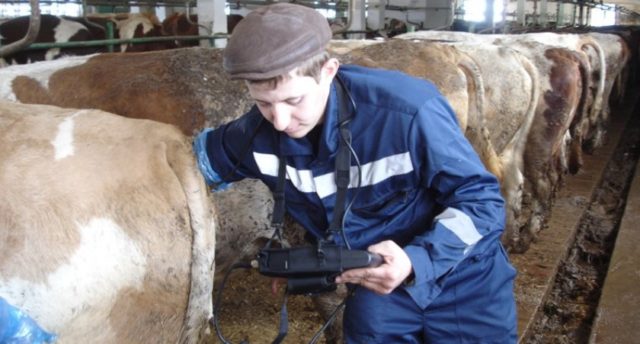

Pregnancy and Calving Calendar
The calendar of pregnancy and calving of cows must be kept on the farm. Thanks to this document, which indicates the estimated date of fertilization, it is easy to calculate when it is time to transfer the cow to dead wood. Start-up must be done 2-2.5 months before calving. This period is very important for the animal, it cannot be neglected. For 65-70 days before the birth of the offspring, the cow rests, gains strength. The pregnancy calendar helps to clearly divide the gestation period into stages.
Cow pregnancy calendar
Starting cows correctly
You need to stop milking animals 45 days before the expected date of birth. The normal time is 60 days, but if the animal is in the group of first-calf heifers or is highly productive, then the process begins in 70 days. However, this is preceded by preparation.
Gradually, in 7 days, you need to remove the juicy and concentrated feed. If it is the grazing season, the cow remains indoors during the walk. Stop massage of the udder and reduce milking to 2 times.
By the day the cow becomes dry, the udder will be saggy and wrinkled. To completely stop milk flow, the animal is transferred to feeding with hay.
A high-yielding cow is launched from the moment she begins to show a productivity of 4 liters per knock. If the cow is meat, then this figure is equal to one liter. Immediately after launch, the animal must be transferred to its usual diet for a few days in order to gain the required mass.
Characteristics of the stages of pregnancy in cows
There are three stages of pregnancy in cows, consider them:
The first stage of pregnancy is the shortest. Its beginning is the fertilization of the cow's egg, and the end of this phase occurs at the time of the attachment of the zygote to the wall of the uterus.
As soon as the implantation of the ovum into the uterine wall has occurred, the embryonic phase begins. Its duration in cows is 60 days. During this time, the embryo develops all systems of the body - nervous, circulatory, cardiovascular, the skeleton and muscles, all internal organs are formed. Closer to the final stage of the embryonic phase of pregnancy, the placenta begins to form.
Signs of pregnancy in a cow by month
It is possible to determine the pregnancy of a cow at different times by the following criteria:
- In the first month, pregnancy is indicated by bloody and clear vaginal discharge, shiny and smooth coat, and calmer behavior. At the same time, there is no leak. In the first month, the uterus can be grasped in the hand during rectal examination; during the procedure, the corpus luteum is clearly felt.
- In the second month, the uterus moves to the entrance to the pelvic region. The horn, in which the amniotic sac is located, increases markedly.
- In the third month of pregnancy, the horn with the amniotic sac continues to grow. During the examination, you can feel the fetus in the uterus.
- In the fourth month, the uterus moves into the abdominal cavity, during the examination, the location and shape of the fetus is clearly determined, as well as the placenta, which by this time reaches 2-3 cm. The blood vessels clearly pulsate.
- In the fifth month of pregnancy, the cervix is noticeably enlarged, which occupies most of the abdominal cavity. The placenta also grows, reaching 4-5 cm. The abdomen visually increases in size, the udder is filled with milk.
- At the sixth month, the uterus descends into the peritoneum, and at this stage of pregnancy it is already difficult to probe the fetus.
- In the eighth month of gestation, the cow is palpated various parts of the calf during palpation. The uterus is located in the pelvic region.
- At the ninth month, a clear swelling of the udder becomes visually noticeable. The lower abdominal wall also swells. The size of the placenta is 8 cm. The fetus moves to the pelvic region.
Important! The absence of heat is not always indicative of a cow's pregnancy. It can also indicate the presence of a number of diseases.
Diseases and complications during pregnancy
The health of the cow before fertilization, as well as the quality of care and nutrition during pregnancy, affect how the fetus will develop. Sometimes an animal has various complications during pregnancy:
- Miscarriage.
- Premature pushing.
- Maceration, decomposition, mummification of the fetus.
- Dropsy of the fetus or membranes.
- Swelling in a cow.
- Vaginal prolapse (occurs during pregnancy and after calving).
- Twisting of the uterus.
Attention! Any deviations from the norm and symptoms of poor health in a pregnant cow require contacting the veterinary service, as they can lead to fetal fading or other pathologies.
After calving, the following complications are most often encountered:
- Retention of the placenta.
- Postpartum paresis.
- Prolapse of the uterus.
These conditions are life-threatening for the animal and require immediate contact with the veterinary service.
A cow's gestation period is the time when she needs attention the most. Immediately after confirmation of pregnancy, the animal is provided with good nutrition, quality walking, and decent living conditions. Only with this approach can one count on the birth of healthy young animals.
Signs
Calving involves not only the birth of the calf itself, but also the time of pregnancy of the cow. This period begins after 280 days from the day of fertilization. But the calving of an animal depends on various factors, for example, on its breed and age, as well as on the size of the fetus and the nutrition of the cow.
According to some signs, it is possible to accurately determine the beginning of calving in a few days. Especially if there is a calendar nearby, as well as the known exact date of the cow's insemination.


One of the most important signs of calving is considered to be swelling of the labia in a cow.They turn bright red, in addition, thick discharge in the form of whitish mucus may appear. If the mucus looks like a curd mass, then this means that the animal has thrush. It is imperative to treat her with antifungal drugs so that there are no complications during childbirth.
What does a pregnant cow mean?
A cow's pregnancy is her physiological state from the moment of fertilization until the birth of a calf. Fruiting does not depend on the breed of the animal and on average lasts at least nine months. In one pregnancy, they give birth to one or two calves. A larger number is not provided for by physical features. Fertilization begins at the age of two. An exception will be dairy cows, which mature by 1.5 years of age. If this is the first time a cattle has such a process, it is called a first-calf.


The challenge for the farmer is to provide a balanced diet. To ensure that your cattle are properly and properly cared for, you will have to increase your expense. During lactation, the animal produces several times more milk, so all costs are paid off. Also, one should not forget about the risks that often appear after calving. Pathologies and various diseases are traced as a result of a lack of a vitamin and mineral complex. It is imperative to provide high-quality food not only for the period of pregnancy, but also at the stage of preparation for it.
Since the farmer is not always able to indicate the exact date of fertilization, pregnancy lasts from 250 to 300 days. As in humans, influencing factors will be: health status, activity, living conditions, nutrition and care. The livestock owner is obliged to prepare for calving, focusing on his own calendar.
Features of pregnancy
A pregnant cow is called during the period from successful fertilization to delivery. Moreover, she should not be the first. For the first time, a fertilized young individual is called a heifer. That is, the pregnant cow has already given birth to a calf, and after some time she again becomes pregnant.
During pregnancy, competent livestock breeders maintain a special calendar that tells you how to determine the due date of a cow. The quality of the offspring and productivity after childbirth depend on the correct designation of important dates. In the calendar, the stages of fetal development are broken down by month. A personal table for the female will help to better imagine the intricacies of starting pregnant cows. It will help you determine the correct diet.
Interesting
In the first month of pregnancy, practically nothing changes for a cow. The weight of the embryo is small - up to 1 gram, because there is no fetus as such. The active growth of the calf begins from the second month. At this time, the placenta appears. The weight of the embryo reaches 20-30 grams.
The fetus will look like a full-fledged calf by the fifth month. By this time, he grows up to 45 cm, and weighs about 50 kg. The hair and hooves on the legs are formed by the 7th month of pregnancy. Already by the very birth, teeth and internal organs are formed.
The entire gestation period of cows stretches for 285 days. If you indicate the date of fertilization in the calendar, it is more convenient to count the days to dryness and determine the day of calving.
Is your cow pregnant: how to find out about it
There are several practical ways to determine if a livestock is pregnant. If there is no possibility of laboratory research, you will have to carry out procedures at home. Ultrasound examinations are considered the most accurate.
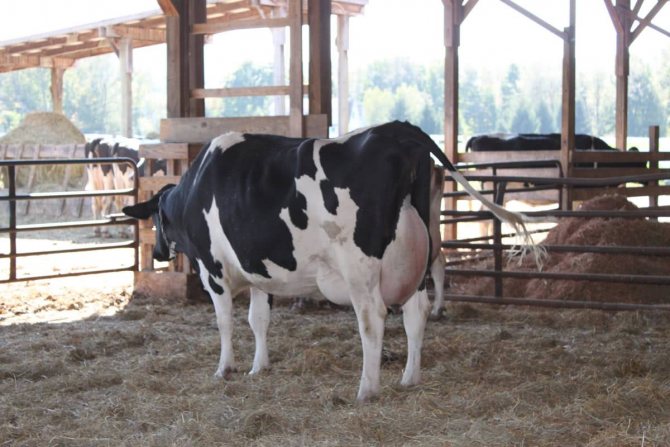

In the early stages of pregnancy, a cow is determined after visual inspection of the individual and by observation. One of the signals will be increased appetite. If earlier the animal led an active lifestyle, now there is peace and tranquility. Much depends on character, but most cows do become more measured. This is reflected in their habits.Also, the farmer is able to determine the mucous discharge. They do not always appear in the early stages, but it is imperative to observe this.
Three weeks after conception, special strips for the test will be effective. Biochemistry is recommended after four weeks. An increased amount of progesterone is observed in the blood (as in women). After an ultrasound scan, the issue of pregnancy is resolved by itself.
During the early diagnostic stages, it is also possible to conduct a small experiment at home without equipment. Fresh milk is diluted with alcohol tincture (at least 95%). If the animal is in position, the clotting time is significantly reduced from 30 minutes to 6.
It will be possible to examine the abdomen only in the middle term. After 20 weeks from fertilization, apply some light pressure on the right side. If a calf is born there, its movements will be felt. In no case do not hurt the animal, because in this position the sensitivity is significantly increased. Avoid wasting and remember the role of nutrition during pregnancy.
In the last months of pregnancy, vaginal discharge takes on a rich yellowish color, and their number also increases. A month before the alleged birth, the right side visually protrudes. This speaks of an upcoming event.
The udder of the heifer must also be prepared for lactation. To do this, learn simple massage techniques. The main condition is that the animal must trust and relax during the procedure. At the end of the manipulation, the nipples are kneaded, through which the calf will receive the required amount of natural nutrition. Every day should be given at least 5 minutes for the procedure.
Basic methods
There are several methods for detecting pregnancy in cattle.
Here they are:
- Laboratory. It is most often used in large livestock farms with their own laboratories. The reliability of the analysis for which milk is used is quite high - the result is determined absolutely exactly after 3-4 weeks. A blood test allows you to get an answer only in the second month of pregnancy.
- Ultrasonic. It is used quite rarely due to the impressive cost, but the result is also unmistakable. It is permissible to do it no earlier than 30 days after insemination, otherwise ultrasound can provoke a miscarriage.
- Manual. Feeling the outside of the fetus.
- Rectal. The uterus is felt through the rectum. No additional equipment is required, but you need experience and a responsible attitude towards the animal.
- Simple folk. Will be discussed in detail below.
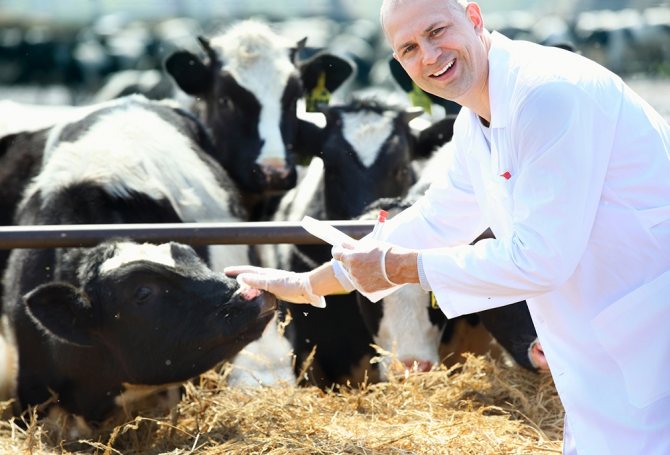

Pregnant cow's milk: why it tastes bitter
The taste of milk is directly related to the feed and the state of health. There are a number of ailments of a pregnant cow that affect the taste of the product:
- liver disorders: provoked by a lack of carbohydrates. Because of this, destructive processes occur in the organ, which can only be stopped or prevented by a balanced diet. When the breakdown of glycogen is traced, the body becomes practically unprotected from bacteria and other negative factors;
- metabolic disorders are a harbinger of an increase in acetic acid in milk. Because of this, the milk is very bitter;
- taste changes occur against the background of periods when heat should be;
- various infectious infections. Experts advise not to ignore the alarming signals, since there are risks of developing serious ailments and even death;
- the activity of parasites in the body requires immediate veterinary intervention in order to exclude damage as quickly as possible;
- inflammatory vaginal processes.
Preparing for childbirth
This process consists not only in good care and proper feeding of the cow, but also in its timely launch. Already 2 months before calving, it is necessary to enrich her diet with fiber. In addition, you need to carefully monitor the weight of the cow.If it drops too low, then it is necessary to add more nutritious food to her diet.
You also need to slightly lower the amount of calcium, which can cause the fetus to become overweight or complicate childbirth. During this period, you should not give the cow any silage grasses.
2 weeks before the onset of labor, the animal's appetite decreases significantly, and some lethargy also appears. After all, the fetus grows and puts more pressure on the internal organs of the cow. At this time, it is imperative to add vitamins to the diet, as well as foods that will be enriched with phosphorus and zinc. The menu of this period should include:
- 55% cereals and silage;
- 21% concentrates;
- 15% rougher feed;
- 50 g of chalk;
- 30 g of salt.
At this time, it is imperative to conduct a gynecological examination of the cow. Thanks to it, the veterinarian will be able to more accurately determine when calving will occur.
A very important point in preparing for childbirth is the process of starting the cow, that is, the moment when the cow stops milking. This happens 1.5-2 months before delivery. However, it must be started gradually so that mastitis does not appear in the cow. The launch can be done naturally, as well as forced, that is, by injecting special preparations into the nipples with a syringe.
During this period, all juicy foods are removed from the animal's diet and the amount of cereals is reduced. They give more hay or straw. At the time of launch, it is imperative to reduce the amount of water to one bucket per day. The water must be warm. This is done to ensure that the startup process is painless and fast.
Reception of a calf
It is necessary to prepare very carefully for future childbirth. Before starting them, you must definitely take care of the cleanliness of the room where they will be held. It is necessary to whitewash the walls, and also be sure to treat everything with not too aggressive disinfectants. On the floor, you need to spread fresh hay or straw, and put a bag on top.
Before giving birth, the cow must also be thoroughly cleaned and washed. Before giving birth, as soon as their first signs appear, it is necessary to treat the hind legs with a light solution of creolin, as well as her genitals.
24 hours before the start of labor, the cow comes out with a cork - blood clots. At this time, she must be given plenty of rest. When it comes to calving, most often the animal is standing or lying on its side.
Animal contractions occur with a frequency of several minutes, their duration is 2.5 minutes. A little later, a bladder appears from the cow's vagina. If it hasn't burst, then as soon as the legs of the calf appear, it must be torn apart by ourselves. If everything is in order and the fetus is placed correctly, then the front legs, on which the head of the calf is located, go first, and then the rest of the body.
With the right hotel, childbirth ends in 25 minutes. When the due time has passed, and there is still no offspring (except this, the time of contractions occurs less and less), this only means that the calf is stuck and needs help to be born. To do this, you need to wear rubber gloves, be sure to disinfect them, and then put your hands inside the cow and gently pull the baby out.
How many days does a cow go pregnant
Livestock breeders talk about periods of up to nine months - the period from fertilization to calving of a cow. To prepare for the upcoming gestation of a calf, you need to adhere to the dry period. This is the allotted time for the rest of the cow. They begin to feed her vigorously, taking into account a balanced diet, and stop milking. It is allocated for dead wood from 1.5 to 2 months. Not only the condition of the livestock, but also the future baby depends on this. Thus, it is possible to avoid the development of diseases and maintain milk yield, which can be easily resumed after calving.
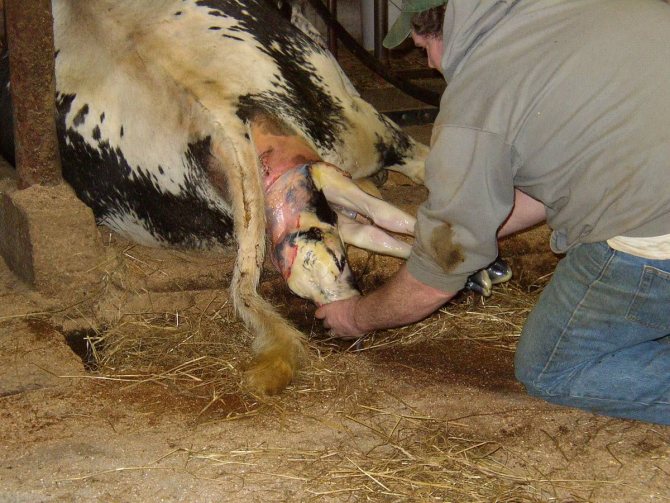

Tips & Tricks
An individual calving calendar is drawn up for each cow, depending on when she was bred.If everything is done in accordance with the existing rules, this will allow you to get the lactation period as productive as possible.
Seven days before delivery:
- The ligaments located at the root of the tail and near the pelvis begin to descend.
- At the same time, the udder should be covered with a liquid that looks a bit like sugar syrup (colostrum).
- The cow often lies down and bellows loudly.
- You can see that the udder of the cow is increasing.
- In the summer, the cow tries not to be in the herd, looking for a secluded place. If you don't look after her, she can give birth to a calf in one of these nooks.
- The genitals swell a little.
- The belly becomes saggy.
Note! When only a day is left before calving, the animal becomes especially restless.
It is important to monitor the appearance of these signs in order to know when exactly calving will occur.


Experienced livestock breeders take a very responsible approach to breeding cows. Any of them knows that calving of the cow plays an important role here. Therefore, it is necessary to approach this process correctly, to launch the animal on time, and also to prepare it for childbirth.
Discharge from a pregnant cow
After insemination, the cow should not have too much discharge of the characteristic odor or color. If such signs are observed, there is a chance of contracting vaginitis. It is impossible to delay the diagnosis so as not to start the infectious process.
White discharge can be seen early in pregnancy. There is nothing special or alarming about this unless the cow shows other signs of illness. Most often, the liquid has a transparent or barely white color with a stretching consistency.
If a pregnant cow is bleeding, this is an alarming signal. One of the reasons is the premature interruption of the bearing of the fetus. See your veterinarian right away to save the life of the animal and the calf. Measures must be taken immediately, since the health risks are serious enough.
Calving time of the cow after insemination
In order to find out approximately the date of birth of a calf, you can calculate it using the following formula:
(Calving date) = ((Day of month) + 11) / (Number of month - 3)
In the formula under consideration, the following designations are used:
- calving date - the calf is expected to be born on this day;
- day of the month is the day of the month when fertilization took place;
- the month number is equal to the ordinal number of the month from the beginning of the year (January corresponds to one, February to two, and so on).
Let's give an example of the calculation. Let's say a cow was inseminated on September 15th. In this case, the formula is applied as follows:
(Calving date) = (15 + 11) / (9 - 3) = 28/6
With the help of calculations according to this formula, it was obtained that calving will occur approximately on June 28th.
Calving time of the cow after insemination
A situation is possible when the first amount exceeds the number of days of the month. In this case, the number must be reduced by the indicated amount.
Example. If the number 25 and 11 are summed up, then the result will be 36. From it it is necessary to subtract 30 (the number of days in a month) and write down the result of the subtraction.
The number of days in different months is different, but remember that this is an approximate date, not an exact date.
In addition to using the formula given here, there is another way. In this case, the calving calendar is used to determine the desired date.
Feeding pregnant cows
When carrying a fetus, cows need a special diet. Note that at the end of pregnancy, the weight of a newborn can reach 20 kilograms. It will be too difficult for a cow to bear a healthy calf, so the farmer faces the task of providing her with a balanced diet. The feed should contain a large amount of proteins and useful microelements. Do not forget about the mandatory availability of water. A water hole is needed 2-4 times a day.
Deficiency of basic vitamins can lead not only to fetal pathologies, but also cause miscarriage. During the dry season, it is best to feed with herbs and silage. You shouldn't skimp on high quality feeds, which are specially designed to prepare for pregnancy.
In winter, coniferous supplements in the form of flour or branches will be useful. This is a good source of vitamins to help prepare for childbirth. Eliminate moldy hay and frozen vegetables. Due to improper nutrition, the condition of the animal and the taste of milk significantly deteriorate. Such ingredients can be fatal to the fetus and the cow.
Breeding and rules for caring for cows
Cows in agriculture are comfortable animals. The possibility of obtaining milk, meat and regular offspring allows for a constant flow of clean product.


Cows should be fed with high quality feed
Despite the apparent unpretentiousness, cows require care and maintenance of certain conditions. Each cow in the herd needs a separate stall that meets certain conditions. The constant background temperature should be no higher than 18 °.
Note! If the temperature is not observed, lethargy and problems with milk yield can be observed.
When building a barn, materials that are resistant to dirt and are durable should be used. Stalls should be brightly lit in excess of 40 watts. In addition to the stall, there should be a place for walking with a canopy from the weather and the scorching sun. When the temperature drops below -15 ° in winter, it is forbidden to let animals go for a walk.
Water tubs and salt stones should always be available in the area to replenish calcium deficiency.
When breeding cows, the health of both sexes should be carefully monitored. You can give the bull the opportunity to mate freely. In this case, it is impossible to control the process and make sure that all cows are covered.
In case of separate housing, it is possible to bring the heifer with an inseminating bull in a separate arena with a pen. The machine will relieve stress on the cow, making the mating process easier.
The most effective method of fertilization is artificial insemination under laboratory conditions with pre-collected and tested ejaculate. This method provides the highest guarantees for the success of the conception process.
Cows should be fed with high quality food, stored in conditions that do not allow it to become moldy or damp.
Is it possible to vaccinate a pregnant cow
Vaccination of pregnant cows is permissible until the 7th month of pregnancy. For 60 days before the date of expected birth, exclude the introduction of any drugs. An exception would be the introduction of the anthrax vaccine. Veterinarians also advise avoiding donating blood for leukemia. All this can negatively affect the condition of the pregnant cow and calf.
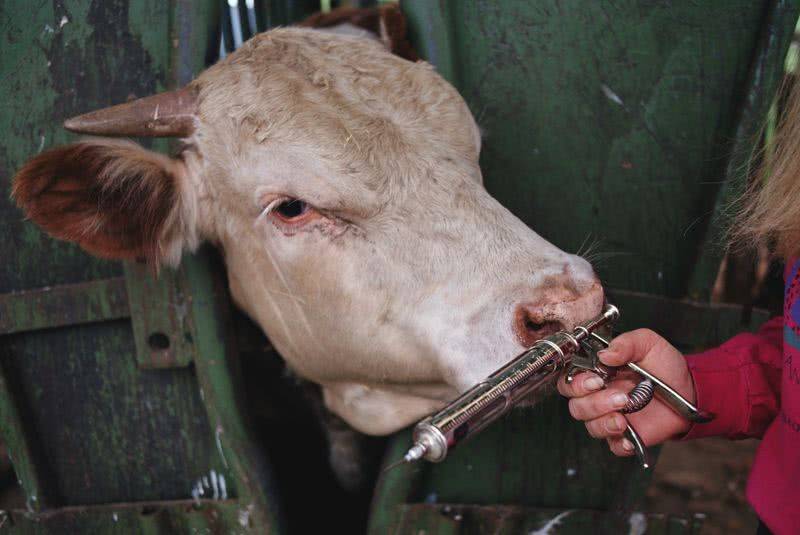

Vaccinations are best done in advance of the dry period. Each cow must have a vaccination schedule that must be strictly adhered to. It is not worth risking the livestock, especially if there is fertilization in the prospects. Vaccinations against foot and mouth disease are also done before the 7th month of pregnancy. For this, a lapinized culture virus vaccine is used.
If it is possible to do this earlier, do not postpone until the moment of insemination. The same goes for rabies prevention. With an acute deficiency of the vitamin complex, it is important to correct the situation in a timely manner. The best way is proper nutrition, but if necessary, you will have to inject vitamins. This is a compulsory measure to preserve the life of the cow and calf, to strengthen their health and safe childbirth.
Pregnant animals need special care, nutrition, health diagnostics. If you ignore the alarm signals, you can face infectious diseases, which will lead to fetal pathologies.It is better for novice farmers to immediately contact experienced professionals who will help understand all stages of pregnancy. Provide the animal with all the conditions and do not spare money, because it is worth it. The appearance of a calf is a rather serious and difficult process that you will have to go through with the cow.
First-calf pregnancy
An urgent question for many novice farmers is how to find out if a first-calf cow is pregnant? After all, it is she who will need to provide good care for safe bearing and permission from childbirth. The main signs of a first-calf pregnancy are:
- mucous, sticky, drying in a thin stream, discharge from the genital opening after 2 months of the first acquaintance with the bull;
- lack of hunting when launching a bull into a herd of cows;
- swelling of the limbs, udder and lower abdominal cavity;
- lack of heat;
- asymmetrical belly.
A pregnant heifer behaves in a balanced, calm and even a little cautious and detached from the general herd. As a rule, she has a good appetite, and if a pregnant woman walks, she will never refuse the proposed feed.
When to start launching?
The launch period for animals is an important period. The cow stops being milked. A special diet is prescribed for her, a daily exercise is organized. The animal is recovering from the lactation period. He has a process of renewal of the alveoli in the udder. A properly executed launch will ensure high productivity and the birth of a full-fledged calf.
Cows are put into dead wood 60 days before calving. Until that time, it is necessary to stop milking them. The transition period from lactation to dead wood is observed. In highly productive cows, it lasts 15 days. In animals that do not differ in high milk yield, 7 days are given to stop lactation.
In large livestock complexes, special methods of terminating lactation are used. Hormonal preparations are used so that milk ceases to be produced in all animals at the same time. This makes it easier to form the number of dry cows, inseminate and predict the birth of calves.
If the cow's calving schedule is set to February 12, then the dry period should begin on December 12. In winter, exercise should be no more than 2 hours in frost, no more than 4 hours in good weather with an air temperature of about zero. Make up the following diet:
- 8-12 kg of hay;
- 16 kg - juicy food;
- 2 kg - concentrates;
- 50 g - salt;
- 40 g chalk.
If the projected calving date of the cow is in June, then the launch begins in April. This is the grazing period. The main food for the cattle is green grass. For dry cows, the main diet will be grass in the meadow. Areas with medium vegetation are selected. Walking lasts up to 6 hours. Before walking, the animal is given hay, 5 kg. Upon returning to the stables, the cow is fed 1.5 kg of concentrates. They continue to give salt and chalk.
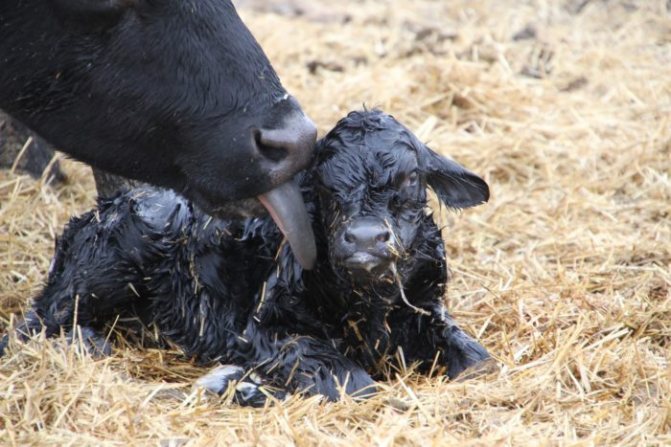

Milk is not taken during the dry period, so all minerals and mineral salts remain in the body. Special feeding is not prescribed for animals. Overeating should not be allowed so that the microflora is not disturbed in the rumen, and pathologies do not develop. Heifers are prescribed a dead wood diet 70 days before the birth of the calf.
Read also: Horse teeth: anatomy, age determination
How to make a calving schedule for cows?
In order to properly prepare a cow for calving, to run it in dead wood on time, it is necessary to be able to predict the date of birth of a calf. Sexual maturity in females begins to appear at 7-8 months. The time of the first mating or artificial insemination depends on the breed of cattle.
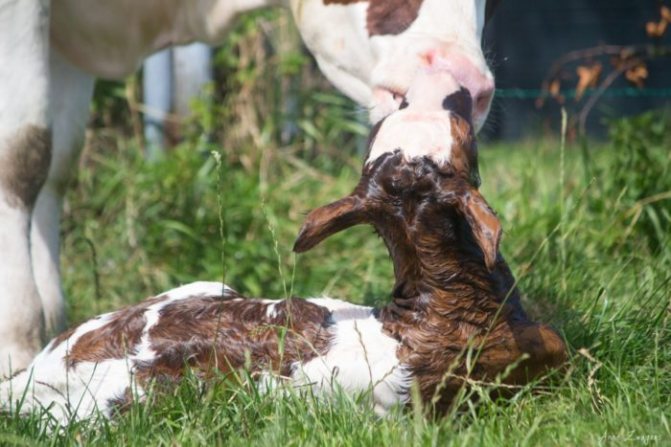

Early ripening individuals quickly gain weight, their reproductive organs form early and hunting begins. They are taken for mating at the age of 14-16 months. In late-maturing cows, weight can increase rapidly, but the reproductive organs are formed closer to 2 years.Meat breeds are most often late ripening.
Read also: Compound feed for pigs: types and preparation at home
Females are led for the first mating at 22 months. After mating, it is important to determine the pregnancy of the female. This is necessary in order to predict the time of calving. The first signs of pregnancy are not visible from the first months. The belly begins to increase only by the 5th month of pregnancy.
Pregnancy tests can be wrong. However, veterinarians make pregnancy schedules. They indicate the dates of mating and expected calving. How to draw up a calving schedule for cows correctly? What should be considered when doing this?
How the launch is done
The launch should begin no later than 45 days before calving. The norm is 2 months, and for primiparous and highly productive cows, the launch begins in 70 days. But the animal still needs to be prepared for it.
Read also: Cow's eyesore: causes and treatment
Gradually, within 5-7 days, juicy feeds and concentrates are excluded from the diet. At this time, the cow is not even taken out to the pasture. At the same time, the amount of fluid consumed is reduced. The udder massage should be stopped and the number of milkings should be reduced to 2.


By the time of launch, the udder sags and wrinkles appear on it. In order for the cow to stop milking, she is completely transferred to hay.
In high-yielding dairy breeds, it is possible to stop milking and start a cow at a productivity of 4 liters per day. And for beef cattle, the milk rate at start-up is 1 liter. As soon as the cow was started, that is, transferred to dead wood and stopped milking, the daily ration and the range of conventional feeds are returned in 3-4 days so that the animal gains weight.
How to calculate calving time?
In the first month after mating, specialists conduct express pregnancy tests, take blood and milk tests for the presence of chorionic gonadotropin, which is a pregnancy hormone. The main sign of pregnancy is considered to be the beginning of hunting in cows. If after mating the animal does not show hunting, behaves calmly, avoids other individuals in the herd, then pregnancy is noted.
The time of mating or insemination is recorded in the log. Cattle pregnancy lasts 285 days. The date of the expected calving is calculated according to the calendar. She is put in a certain column of the calving table. This is one way of calculating the time of birth of a calf. The date may deviate from the calculations for 5 days. This is the norm.
Professionals have special tables. They already indicate the days of mating and calving. When carrying out a mating, the veterinarian looks at the next day, which is indicated in the table. By it, he can easily determine the time of the appearance of the calf.
If the mating was carried out on January 10, and there is no such date in the table, then they look at the next day. It will be January 11th. According to the table, calving should be expected on October 22nd. This means that the real forecast of the birth of a calf will be one day earlier, on October 21.
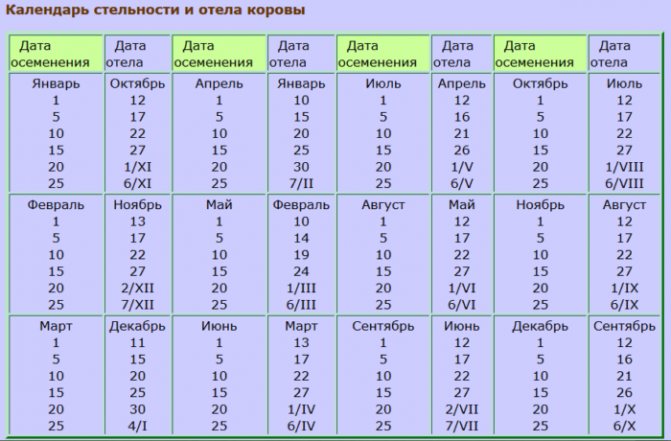

There are formulas for determining calving. D = (H + 11) / (H-3), where
- D - date of birth of the calf;
- H - mating day;
- H is the number of the month in which the mating occurred.
If the mating occurred on May 1, then the calculation is performed: (1 + 11) / (5-3). D = 12/2, the calf will be born on February 12th. How to determine the day if insemination was carried out in March, because the indicator of the month will be equal to "0"? calculate: (1 + 11) / (3-3) = 12/0. In this case, the calf can be expected on December 12th.
The name of the cow, its individual number is recorded in the journal, the method of calving calculation is indicated, the date of insemination and forecast is recorded. Pregnancy in heifers may be shorter. In an adult, the calf can stay in the womb for 5-7 days. This is not considered a pathology.

